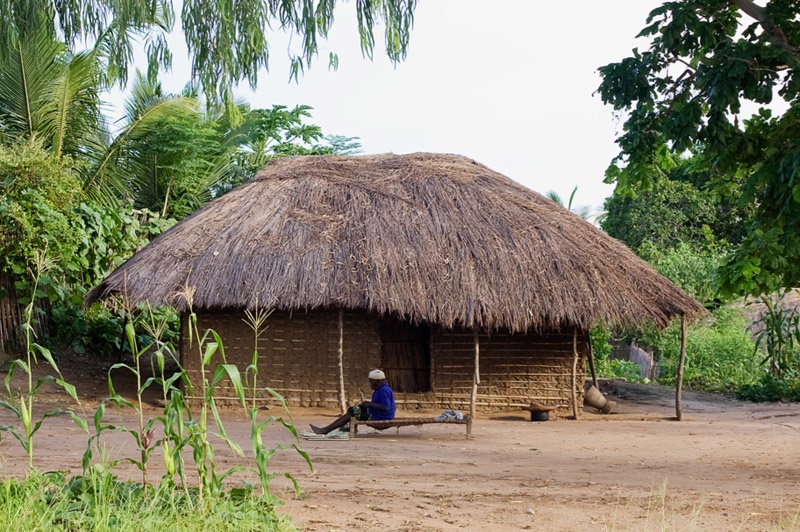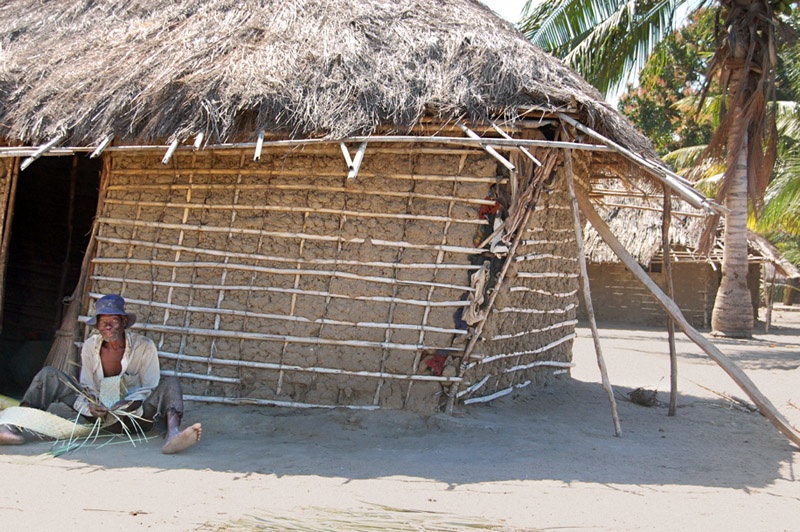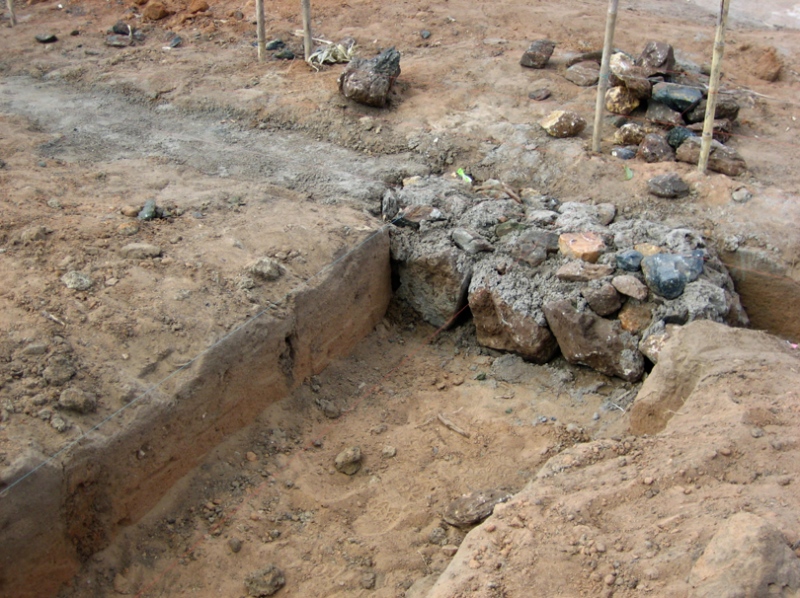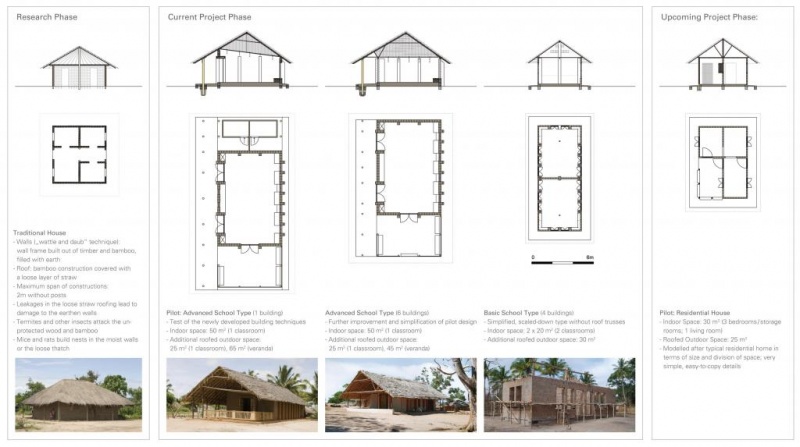image: Paula Holtz | © all rights reserved
#GC2022 is accepting submissions - 25d 27h 05m 44s
The Aga Khan Foundation in Mozambique has completed construction on eleven village school buildings in the country’s poor Northern region. The schools were built using natural resources, and were built as pilot projects for an improved, more permanent construction style that incorporates and develops both local craft skills and locally-available building materials.
Residents of the region live in simple earthen huts which become uninhabitable and collapse after just five to eight years. They dream of owning more permanent, modern brick and concrete houses, even though they know the humidity regulating earthen homes are cooler and more comfortable inside. Homes built using modern materials heat up rapidly in summer, are highly prone to mildew, and are generally uncomfortable and unhealthy.


In order to combat deforestation, the construction system is designed to use as little wood as possible. Instead, the buildings are constructed using the earth-block method, which can also be found in the region. Roof constructions, doors, windows and other details are built of bamboo. Borax, a natural salt, is used to protect the materials against parasites.

Original Situation: Local Residents’ Poor Housing Conditions
Mozambique’s poor Northern region is predominantly populated by villagers living in simple mud huts. These houses have a lifespan of only five to eight years, due to the shortcomings of the construction method and the lack of materials necessary to make the houses more durable.
